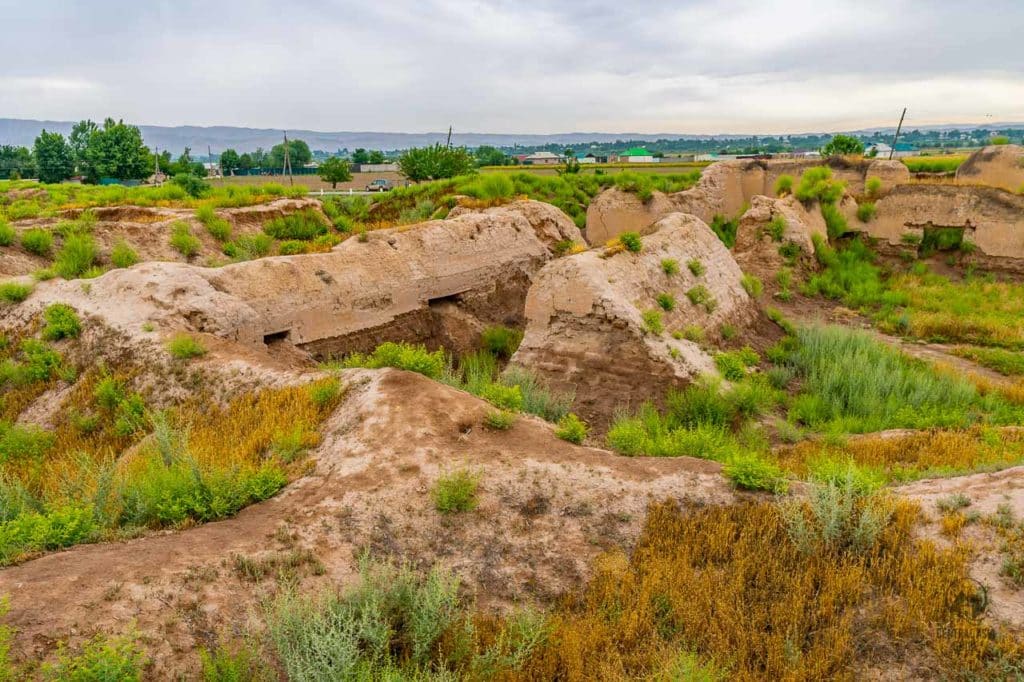Bokhtar
Bokhtar
Bokhtar used to be known previously as Qurghonteppa and it is the capital of the Khatlon region in Southwestern Tajikistan. It is the country’s third-largest city with a population of around 130 000 people. The town is located about 100 km south of Dushanbe and 150 km north of Kunduz town in Afganistan. The city is settled in the upper part of the Vakhsh river valley in the center of a rich oasis.
The precise origins of Bokhtar are unknown but some sources suggest there was human habitation here as early as the 7th century. In the Middle Ages, the region was known as Khuttal and the city itself as Levaqand or Vakhsh. The modern city we can see today dates to the Soviet period with many of the buildings built in the 1970s and 1980s. The most bustling period of Bokhtar’s history was during Tajikistan’s civil war. It was the home of the Islamic Renaissance Party (IRP), which was one of the key opposition groups. In 1992-1993 some of the most serious battles took place in and around the city and as a result buildings were burnt and tens of thousands of people were either killed or fleeing across the border into Afghanistan. The city’s crops and factories were also razed to the ground but only little of the previous violent period can be seen now.


Bokhtar sights
For a such small town, that was severely damaged by the civil war, Bokhtar has a surprisingly high number of interesting sites including three museums, a bazaar, a cultural center and numerous monuments, from the ubiquitous Rudaki to a rather less common Soviet monument to tractors. The city center lies at the end of Somoni Street, where stands a statue of Bobojon Gafurov, eminent historian, General Secretary of the Communist Party 1946 – 1956, who wrote the seminal book ‘TheTajiks’, which tracked the separate identity of the Tajik race.
Khatlon Region Local History Museum
Khatlon Region Local History Museum is located on the Borbad str. 10 and is the most interesting historical collection held here. The museum is large and was opened by President Rahmon himself. Inside the museum you can observe a wide variety of exhibits, dioramas featuring stuffed local wildlife, scale models of what Takht i Sangin and Ajjina Teppa might have looked like, cases of dried insects and a good collection of traditional textiles.
Museum of Historical and Regional Studies of Bokhtar City in Honour of Bibi Khanym
Museum of Historical and Regional Studies of Bokhtar City in Honour of Bibi Khanym is an extraordinary-looking structure on a small hill. The colorful minaret projecting through the roof implies a religious building, but in fact, it is, as the name suggests, dedicated to the city’s past. The collection of the museum presents unique materials on the ethnography and culture of this area.
Around Bokhtar
Ancient Town Lagman
Lagman ancient settlement from the 10th – 13th centuries is located near Bokhtar on the banks of the Vakhsh River. In the 1940s, archaeologists examined it and discovered pipes from an ancient water supply system, brick wells and six-meter fortress walls with towers. This town was one of the ancient Bactrian settlements and occupied originally an area of 43 ha.
Travel to Bokhtar
Bokhtar is relatively close to Dushanbe, just 100 km drive through a straight good condition road. You can take a shared taxi for the trip that takes about two hours. Shared taxis leave from the bus stand in Dushanbe’s 46th Microdistrict at Nazarshoev Street in the southern part of the city and drop you at the main bus station in the northwester part of of Bokhtar.
For those traveling further south, it is possible to avoid Bokhtar by taking a turn to the right just before the large bridge over the Vakhsh, 10 km before reaching the town. This road follows the right bank, running along the edge of low foothills, giving good views across the plains. The road joins the main road at the bridge near Jilikul, at 167 km from Dushanbe. The main road goes south from Bokhtar, passing through cotton and wheat fields, small villages and isolated mud-brick houses. Many southern villages have been rebuilt completely since the civil war of the 1990s. This was the area hardest hit in those bloody times, and it speaks much for the resilience and drive of the Tajiks that the south is now at peace.
There is a railway station just outside Kurgan Teppa, which is on the line to Kulob. However, it no longer seems to be operational. There is also an airport but it doesn’t seem to operate commercial flights.
Other sights & destinations near Bokhtar
Page updated 30.3.2023